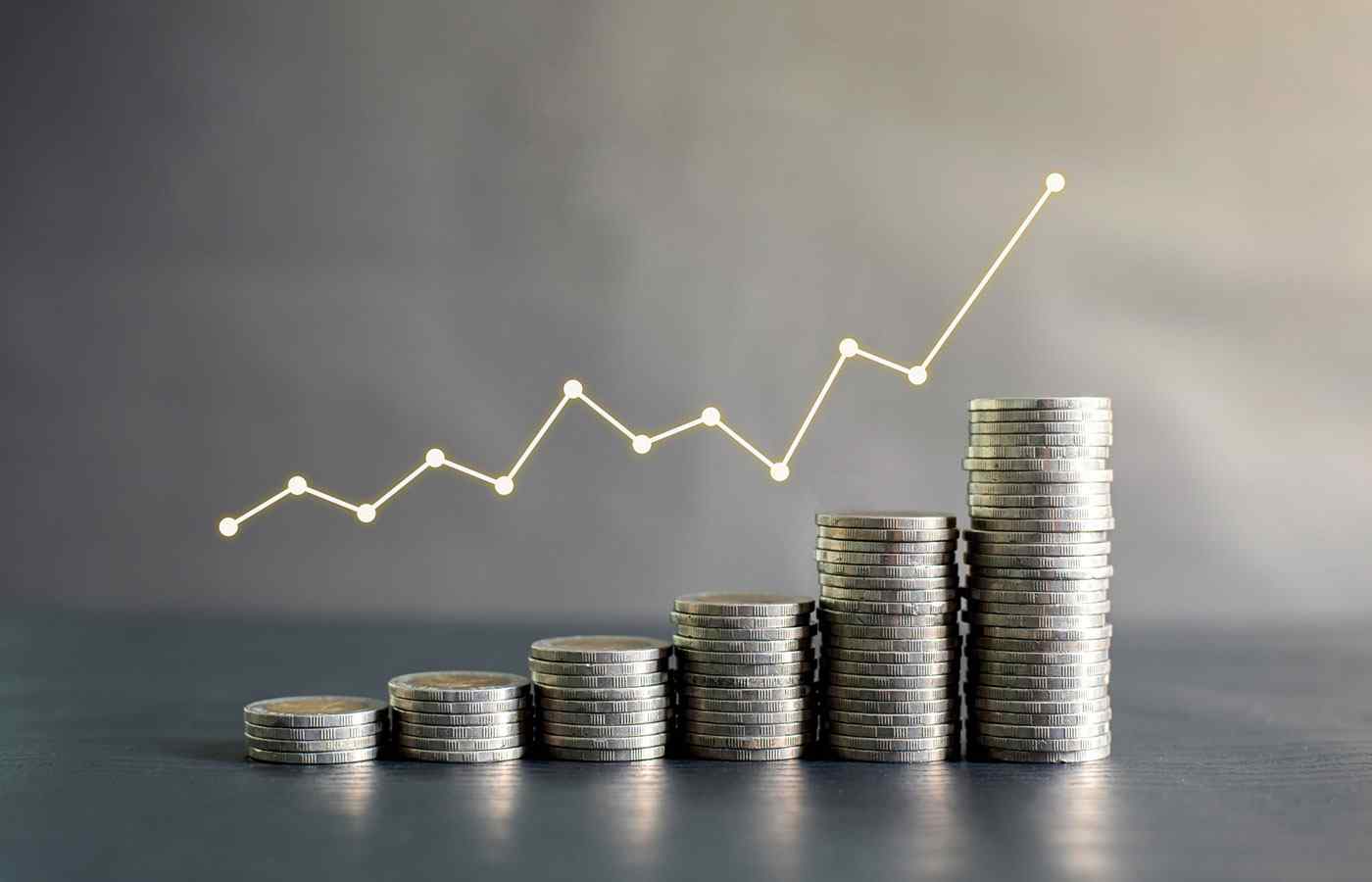Inflation is a decrease in the purchasing power of money, resulting in higher prices for products and services. And if left out of control, it can severely impact consumer and investor wealth. That’s why central banks, like the Bank of England and the Federal Reserve, constantly watch it. But how do they actually measure inflation?
Some commonly reported numbers stem from indices such as:
- Consumer Price Index (CPI)
- Producer Price Index (PPI)
- Personal Consumption Expenditures Price Index (PCE)
But there are actually far more ways the devaluation of money is measured. And each has its own advantages and disadvantages. So, let’s take a closer look at the factors economists are tracking and their importance to an investor’s portfolio.
RELATED: What Is Inflation, and How Does It Work?
How are inflation rates calculated?
When an economist talks about how inflation increased by x% last month, they’re referring to a percentage increase in a price index. There are a lot of different price indexes, which we’ll explore shortly. But the calculation to measure inflation is the same for each.
Let’s look at an example using this inflation formula.
According to data from the Office for National Statistics, the average price of a pint of milk in the United Kingdom was 49p in February 20221. Skip ahead to February 2023, and the price surged to an average of 70p. Therefore the annual inflation rate for a pint of milk is 42.8%.
How is inflation measured?
A price index tracks the average price for a fixed basket of goods and services produced within the economy. The items within the basket don’t have equal weights. Instead, items with the highest demand from consumers are weighted more heavily than items with lower demand. However, as prices increase, demand may decline, causing a shift in the weights.
Economists use many different price indices. And each one tracks a diverse group of items or services.
Consumer Price Index (CPI)
The Consumer Price Index is arguably one of the most widely followed measures of inflation. It’s designed to track the price changes that consumers pay for day-to-day living expenses. Therefore, the basket of goods contains hundreds of items covering virtually every consumer’s target market.
Some examples include2:
- Food & Non-Alcoholic Beverages – Bread, Rump Steak, Canned Tuna, Peanut Butter, Eggs, Cauliflower, Lemonade.
- Clothing & Footwear – Socks, Schoolwear, T-Shirts, Man’s Tie, Knitting Wool, Sandals, Walking Boots.
- Furniture & Household Goods – Sofas, Kitchen Units, Patio Sets, Curtains, Fridge, Dishwasher.
- Health – NHS Prescription Charges, Allergy Tablets, Plasters, Contact Lenses.
- Communication – Fixed Line Telephone Charges, Internet, Mobile Phones.
- Transport – Cars, Motorbikes, Bicycles, Motor Oil, Car Wash, MOT Test Fees.
- Education – Private School Fees, Evening Classes, UK University Tuition Fees.
CPI inflation can also be extended into the CPIH inflation by adding occupiers’ housing costs into the mix. However, in both cases, the data is gathered using surveys that open the door to inaccuracies. This approach also means that CPI and CPIH are biased toward urban areas resulting in a poor reflection of price increases within rural regions of the country.
Producer Price Index (PPI)
The Producer Price Index works very similarly to the Consumer Price Index. However, this inflation measure provides insight from the manufacturer’s or service provider’s perspective.
It actually consists of three price indices3:
- Commodities – Crude Oil, Iron Ore, Raw Cotton, Oilseeds, Copper Scrap, Raw Milk.
- Intermediate Goods – Processed Foods, Lumber, Gasoline, Asphalt, Paper, Cement, and Steel Mill Products.
- Wholesale Goods – Gardening Equipment, Aircraft, Household Furniture, Eggs, Pet Food.
Since the Producer Price Index focuses on the rising costs of raw materials used by manufacturers, it can measure price changes before they reach consumers. That’s why many economists believe the PPI is a good predictor of future inflation. However, the vastness of the items included and the complexity of its calculation can make the PPI a difficult metric to track accurately.
Personal Consumption Expenditures (PCE)
The PCE index is an extension of the CPI index. As of 2012, the Federal Reserve use it as a primary method to measure inflation as it provides a more accurate depiction of price increases versus the consumer price index. Some notable advantages over the CPI include the following:
- Covers a broader range of goods and services.
- Historical data can be adjusted to provide more useful insight into the current economic environment.
- Can track the impact of consumers selecting substitute goods as a result of rising prices.
Just like the Consumer Price Index, the data is gathered through surveys. However, the key difference is these surveys are completed by businesses rather than consumers, which has historically been a more reliable source of information. Therefore the Personal Consumption Expenditures index is often considered to be more accurate and comprehensive than other consumer-focused inflation measures.
Employment Cost Index (ECI)
The Employment Cost Index is focused on tracking inflation within the labour market. The data is gathered through corporate surveys about employer payrolls to track the change in employee compensation every quarter. Beyond an employee’s base salary, the ECI also tracks the impact of:
- Health Insurance
- Pensions
- Death-Benefit Plans
- Performance Bonuses
While economists often use the Employment Cost Index to track the labour market, it’s particularly useful for employers. Why? Because it can help inform hiring decisions. However, including Performance Bonuses can make the index quite volatile, requiring experts to dissect the face values into more useful and consistent data.
Retail Price Index (RPI)
The Retail Price Index was first introduced in the United Kingdom in 1947 and is produced by the Office For National Statistics. Much like the Consumer Price Index, RPI tracks the price of a basket of goods. However, due to different items being placed in this basket, the RPI and CPI have almost always been different, with the latter typically being lower.
The British government still uses the inflation measure today to track the living wage escalation and a base rate for some inflation-linked gilts. However, over the last decade, the use of the RPI has been steadily diminishing, being replaced by CPI.
How do central banks manage inflation?
One of the primary objectives of any central bank is to secure financial stability. And part of this role involves keeping inflation in check.
There are several tools available to enact monetary policy in this pursuit. When it comes to combating rising inflation, a central bank can restrict the money supply within an economy by increasing interest rates. With capital becoming tighter, economic growth is slowed, allowing inflation to cool off.
This also works in reverse. If inflation is too low and not within the target range of 1% to 3%, a central bank can reduce interest rates, reducing the cost of capital for businesses. Subsequently, economic growth can pick up and increase inflation simultaneously.
Another method to influence economic growth is quantitative easing and tightening. The former involves central banks buying and holding government debt, artificially stimulating growth. If quantitative easing is executed too aggressively, it can lead to inflation. On the other hand, quantitative tightening is when a central bank will begin to unwind its investments, reducing the money supply and allowing inflation to cool off.
How can investors protect their portfolios from inflation?
A small amount of inflation can help elevate an investment portfolio in the long run. But too much can significantly diminish the value of savings. Fortunately, there are several strategies that investors can use to protect their wealth.
- Inflation-Proof Instruments – One of the easiest ways to protect savings from the adverse effects of inflation is to focus on inflation-linked investment instruments. Index-Linked Gilts, I-Bonds, and Treasury Inflation-Protected Securities (TIPS) are examples of fixed-income instruments whose value increase with an underlying inflation index such as CPI.
- Inflation Hedging – Some asset classes have historically outpaced inflation over long time periods. The two most common examples are precious metals such as gold and real estate. By buying shares in a commodity exchange-traded fund (ETF) or real estate investment trust (REIT), investors can quickly diversify and gain exposure to these asset classes.
- Target Higher Returns – Investors with a higher risk tolerance can add more aggressive investments into their portfolios. The objective is to target returns higher than the inflation rate to deliver positive real returns and build wealth over time.
The bottom line
Despite popular belief, a small amount of inflation indicates a healthy economy. But too much causes consumers and businesses to suffer alike. As an investor, measuring and tracking the inflation rate is an important skill to ensure wealth is created in real terms.
Discover market-beating stock ideas today. Join our Premium investing service to get instant access to analyst opinions, in-depth research, our Moonshot Opportunities, and more. Learn More
Article sources
- Office For National Statistics. “RPI :Ave price – Milk: Pasteurised, per pint“
- Office For National Statistics. “Consumer price inflation basket of goods and services: 2023“
- Bureau Of Labor Statistics. “Producer Price Indexes – February 2023“
This article contains general educational information only. It does not take into account the personal financial situation of the reader. Tax treatment is dependent on individual circumstances that may change in the future, and this article does not constitute any form of tax advice. Before committing to any investment decision, an investor must consider their individual financial circumstances and reach out to an independent financial advisor if necessary.





